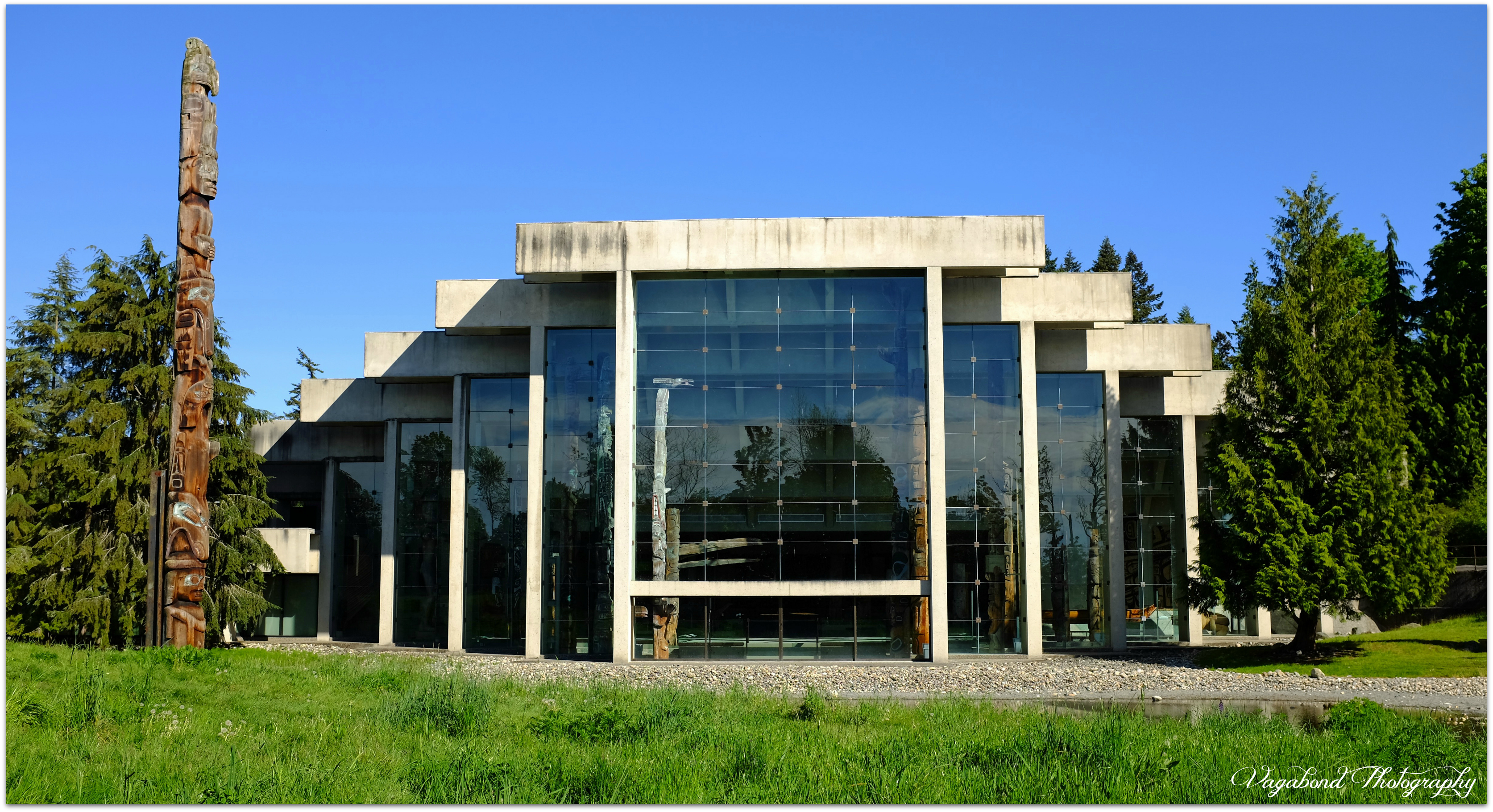The past few glorious weekends have presented me with a wonderful set of adventures on the campus of the University of British Columbia. On site originally for a work visit with Associate Dean of Teacher Education and author Wendy Carr, I just knew I had to come back when I had a full day to explore. In fact, there was so much to discover that I needed two full days with more to come in the next few months.
I thought I would start off my series of UBC stories with my visit to the stunning, otherworldly Museum of Anthropology. Opened in May 1976, the MOA was built on traditional Musqueam territory at UBC overlooking the coast mountains and the ocean. In the Director’s Forward to The Museum of Anthropology at the University of British Columbia, Director Anthony Shelton writes:
On my first visit, I wandered the grounds around the museum, taking the photo you see above. It is important to witness this magnificent building first from the outside in order to best grasp the scale of the windows that let in the forest-tinged light and the symmetry that shapes the light as it falls on each of the carefully curated pieces within. Erickson has indeed created a masterpiece that suits the land it rests upon, and celebrates the past, present and future of the Northwest Peoples that first lived and continue to live here in the Northwest.
The MOA, a public, research and teaching museum, houses 37,000 ethnographic works, 500,000 archeological pieces (including ten totem poles, one of which you see in the photo above, transplanted from Haida Gwaii), and 90,000 historical photographs. Unlike most museums that exhibit works according to their origin, usage or type, the MOA instead arranges works according to indigenous criteria, celebrating the context in which they were made. Some objects are grouped according to ceremonies in which they were used, some around ownership history and some as art forms. As Shelton writes “All cultures and civilizations have developed their own unique criteria, and the museum aims to provide access to many alternative views of ‘reality.'”
Fascinated by the unique design of the museum, I purchased “Arthur Erickson: An Architect’s Life” by David Stouck from the museum shop and did some reading before making my second visit last weekend to explore inside. I learned that Erickson planned that “the museum was to be structured in such a way as to lead the visitor on a path that replicated a walk through the forest towards the ocean.” This was indeed the effect that I experienced as I first witnessed poles, masks and bentwood chests carefully lined along a long corridor that opens up into The Great Hall, which you see in the photo above. It is a vast, sun-lit space that takes your breath away as you experience each new piece and read its compelling story. Ericsson’s phrase for the sanctuary that he created is correct: inside you are surrounded by “the weight of heaven.”
I was quite simply awe-struck on this first visit, not getting too far past the wonderful Bill Reid Rotunda, a story and photo that I will save for my next post. Until then, if you would like to experience more of my UBC adventure through photos, please visit my BC Gallery and then come out here and visit me! I will take you on an adventure you won’t soon forget!



 Hi, I’m Patti, wonderer, wanderer and photographer. During the week I’m a marketer in the publishing industry and on weekends I take to the road to explore this beautiful planet we live on.
Hi, I’m Patti, wonderer, wanderer and photographer. During the week I’m a marketer in the publishing industry and on weekends I take to the road to explore this beautiful planet we live on. 